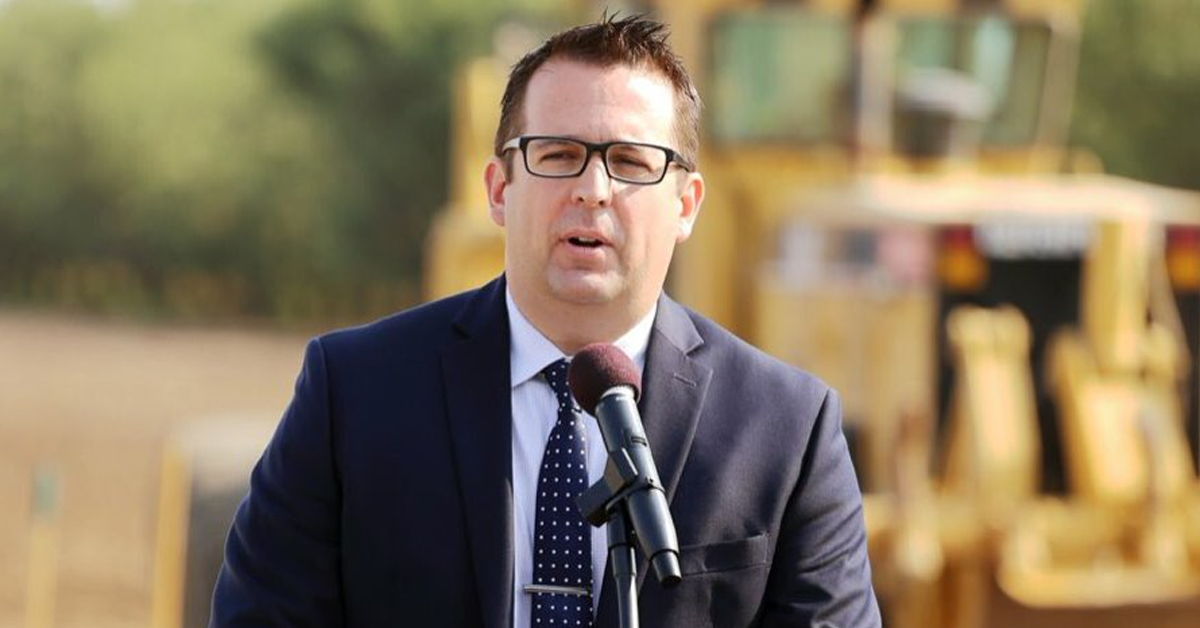Police Auditor John Gliatta’s superb Second Quarter report is more proof of the intractable nature of Fresno’s homeless problem.
At the same time, I see the numbers in Gliatta’s report as a sign of the Police Department’s increasingly nuanced approach to the maintenance of public order.
Gliatta delivers in his most recent report a chart reflecting the activities of PD’s Homeless Task Force for 2018’s first six months. To cut to the chase, officers contacted 2,467 homeless people from January through June. Gliatta notes that only 18 people agreed to take advantage of the multitude of services provided by MAP Point at the Pov (Multi-agency Access Program), the Homeless Engagement Resource Outreach Team and the Fresno Rescue Mission.
In April, for example, officers contacted 338 homeless people. None took the officers up on offers of professional help.
Nearly 2,400 (2,398, to be exact) of the people contacted by the Homeless Task Force simply “moved on,” Gliatta writes. (It’s probably safe to assume some homeless individuals were contacted more than once during the six-month period.)
Gliatta began charting the Homeless Task Force’s efforts in his 2017 Fourth Quarter report. He provides very little analysis in his 2018 Second Quarter review, letting the numbers speak for themselves.
Gliatta writes in conclusion: “On June 20th, Mayor Brand announced a collaborative effort, co-chaired by Mayor Brand and County Supervisor Sal Quintero, to address the homeless issue which includes city, county, and independent organizations, titled Street 2 Home Fresno County.”
Let’s take a closer look at Gilatta’s Second Quarter Homeless Task Force chart:
- 1.) 51 people were booked into the Fresno County Jail for warrants or open charges.
- 2.) 48 shopping cart violations were recorded.
- 3.) 631 shopping carts were removed.
- 4.) 91 citations were issued for warrants and other violations.
- 5.) 24 felonies and 91 misdemeanors were recorded.
- 6.) 7 vehicles were towed.
- 7.) 1,803 camps were cleaned.
- 8.) 2 camping ordinance citations were issued.
For me, the shopping cart numbers stand out. I understand that such carts are an important part of a homeless person’s mobility strategy. Still, the carts all too often are stolen from retailers. And when they’ve outlived their usefulness, the carts all too often end up abandoned in open fields or tossed into an irrigation canal. City officials for years have tried to get a handle on the shopping cart problem. The Homeless Task Force appears to be diligent in doing its part to fix things.
Maybe it’s just wishful thinking on my part, but I view some of Gliatta’s numbers as a sign that the officers of the Homeless Task Force display considerable tack and professionalism in going about their duties. Compare, for instance, the number of homeless camps cleaned up (1,803) to the number of homeless camping citations (2). In the absence of an explanation from Gliatta, I am interpreting that contrast as proof that the officers are intent on helping some of Fresno’s most troubled residents and, at the same time, insisting that public standards be upheld.
In other words, the officers aren’t abusing their authority. Only true professionals can do it.
Fresnans will be hearing a lot in the next year or two about community-based policing. Mayor Lee Brand has made the concept a priority. So, too, has Chief Jerry Dyer. The Mayor’s new Citizens Public Safety Advisory Board, once it hits its stride, almost certainly will chart the effectiveness of community-based policing techniques. And it’s clear by the depth of his quarterly reports that Police Auditor Gliatta takes keen interest in the newest policing trends.
“City Journal,” the New York City-based magazine focused on urban issues, recently published online an article titled “Precision Policing: Data, discretion, and community outreach can ensure a new era of public safety.” The authors are William J. Bratton, a former New York City police commissioner, and Jon Murad, a former assistant commissioner and uniformed NYC police officer.
It’s a long article dealing with the complexity of urban policing in pluralist society. Bratton and Murad tackle what they call the “Great Divide…. The chasm that exists between the police and many minority communities, owing to America’s unresolved quest for racial equality.”
The authors describe precision policing as “an organizing principle for the complexities of structuring, managing, motivating, and leading a twenty-first century police force. We believe that it can make any city, town, or neighborhood a safer – and fairer – place.”
My point here isn’t to analyze the entire article, or to suggest how precision policing might dovetail with Mayor Brand’s vision for community-based policing. My point is simply to suggest that the Fresno Police Department’s Homeless Task Force might already be employing some of law enforcement’s cutting edge best practices.
Bratton and Murad write: “When Bratton returned to the NYPD in 2014, under Mayor Bill de Blasio, he sought to implement a new emphasis on quality over quantity. The department, we believed, had become too wedded to over-enforcement of the sort produced by lessened officer discretion. Officers had been primed to view arrests as better than summonses, and summonses as better than admonishments, regardless of on-the-ground conditions. This inflamed relations with residents in some neighborhoods.”
NYPD officials, the authors write, sought ways “to temper enforcement in a thoughtful way” without compromising the department’s charge to catch the bad guys and stop serious disorder.
To make a long story short, Bratton and Murad think the Big Apple’s police force is well on its way to finding and implementing that “thoughtful way.”
Police departments evolve and improve. Police Auditor Gliatta’s newest report is 35 pages of proof that the Fresno Police Department is evolving and improving.
Gliatta ends his report by noting that 23 officers were fired in the five years between 2013 and 2017. In the first six months of 2018, there have been zero firings.
Gliatta notes that the department issued 47 letters of reprimand between 2013 and 2017. The number of letters of reprimand issued in the first six months of 2018: One.









The City of Fresno has known for over four years now that a 24/7. 365 days a year, LOW BARRIER, come as you are emergency shelter is needed. Currently there is not enough low barrier (read: homeless can bring their faithful animal into the shelter with them; their belongings and the person they are in ‘relationship’ with) Fresno has known this but proceeded with the ‘anti camping’ ordinance that resulted in scattering the homeless (this would be the number that ‘moved along’) Now George, I don’t know about you but I think it is not quite ‘sporting’ to demand that the homeless get ‘help’ when the kind of ‘help’ they need (low barrier shelter) doesn’t exist. Remember that the City of Fresno visited the Alpha Project in San Diego after which they returned to Fresno to tell ta payers that the model (housing 800 souls in low barrier sprung structure shelters) was being ‘considered.’ Let’s look at the ‘other’ numbers here which would be tax payer dollars. Leaving one homeless person on the street on a yearly basis costs tax payers $41,000 per year (HUD nationwide figure) so that number multiplied by 1500 (actual number of homeless in Fresno …NOT the misleading figure indicated that accounts for multiple contacts made of individual homeless) equates to SIXTYONE MILLION, FIVE HUNDRED THOUSAND dollars a year to chase those 1500 souls. Ridiculous. Add to this the police department proposed 2019 budget ‘Service calls to address homeless’ amount of $9,682,000 (look at the entire list of the City of Fresno’s Citywide Efforts towards Homelessness dated June 4, 2018 budget request from Wilma Quan Sector.) “Bottom line” is that if the City Provided low barrier shelter that would truly meet the needs of the homeless there would be a cost savings and the homeless would truly be served. Instead of doing the next right thing the City has wasted tax payer dollars running herd on the homeless….breaking up camps….chasng them into once peaceful family neighborhoods in our county islands. Not sporting George and not okay, How many new officers could we add to the police force if the 9,682.000 ‘service calls to address homeless’ was not needed? Think about that.